They’re not widely grown, but don’t let that stop you from giving these delectable productive plants a go in your own garden.
In the garden: Unusual edibles to grow at home
How is it, if these edibles are so incredible, that we have not really heard of them and can’t buy them readily in the shops? The answer is simple: they just don’t transport well.
They taste great, look great, grow well, are easy to care for and have plenty of uses – but these fruits just don’t like being bumped around in boxes in a truck for hundreds of kilometres.
But there is good news. You can grow your own – successfully too. Exotic as they sound, they really are not as challenging as you might think.
I have seen all of these develop over the past few years in a friend’s garden. They survive in full sun, exposed conditions, often neglected except for very basic irrigation and some aged manure in the holes before planting. These hardy wonders still grow well and he gets plenty of tasty fruit – and is generous when it comes to sharing.
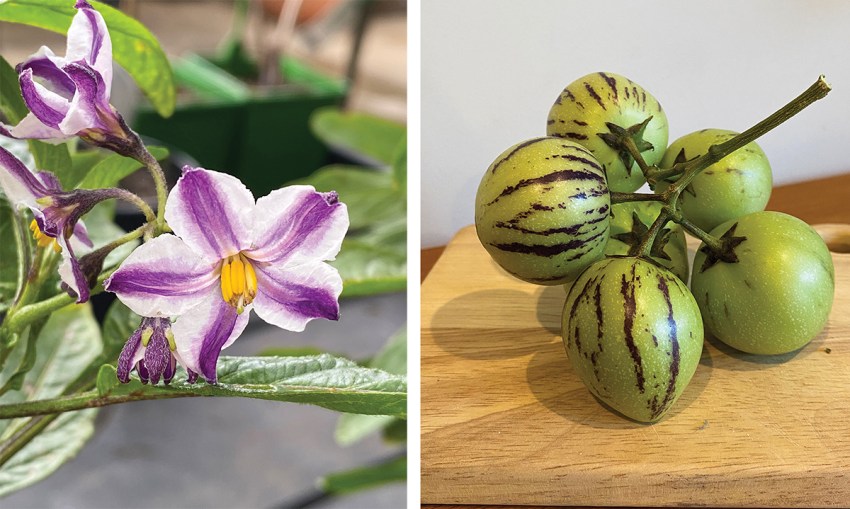
Pepino Solanum muricatum
A fast-growing, low shrub with a melon-esque flavour. Or, if a bit underripe, a cucumber flavour. Essentially a bit of a cross between rockmelon and cucumber depending on stage of readiness. But seriously tasty! With striking eggplant-coloured stripes on the fruit, the main colour starts out an apple green turning to orange-gold. For best results, leave on the plant as long as possible and pick when you want to eat them. This perennial, small and compact plant is perfect for patios, pots, beginners and small gardens. As part of the broader tomato family, it enjoys the sun and probably won’t mind a bit of our Adelaide alkaline soil. Protect from frost, but it will comfortably tolerate cooler and shady positions. A happy plant is one that is also kept moist. As they grow, you may need to give them some structural support as they can get top heavy and fruit-laden branches may snap (much like a tomato). But be wary – you may be finding that these get shared with our common, hungry fur-enemies: possums and rats. But if you get to them first, try them in a fruit salad or smoothie. Lastly, for those who are impatient, unripe fruit have a good chance of ripening in the fruit bowl if left with some bananas.
Guava, guava and guava
There’s more to these three than meets the eye. Pineapple guava, strawberry guava and apple guava area all quite different, despite the common name.
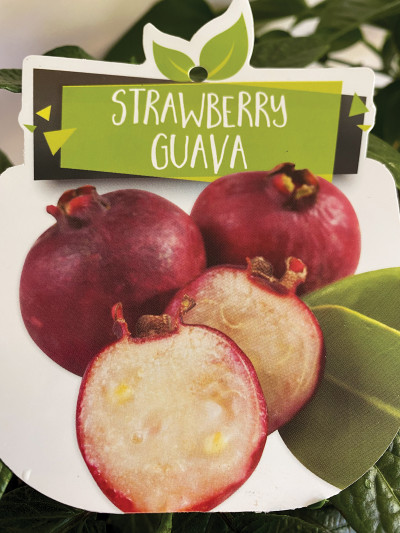
Strawberry guava, Psidium littorale var. Cattleianum
Slower growing, standing two to three metres tall, and slower to bear fruit, growing this tree is still worth the wait. Frost sensitive when young but becoming hardier as it matures, these trees will live for many years. A tidy rounded habit, it has minimal pest and disease problems and overwinters fine as it ages. Producing small cherry-size fruit around autumn and winter, they have an elegant sweet strawberry flavour with a dash of passionfruit and a crisp texture burst in your mouth when eaten whole.
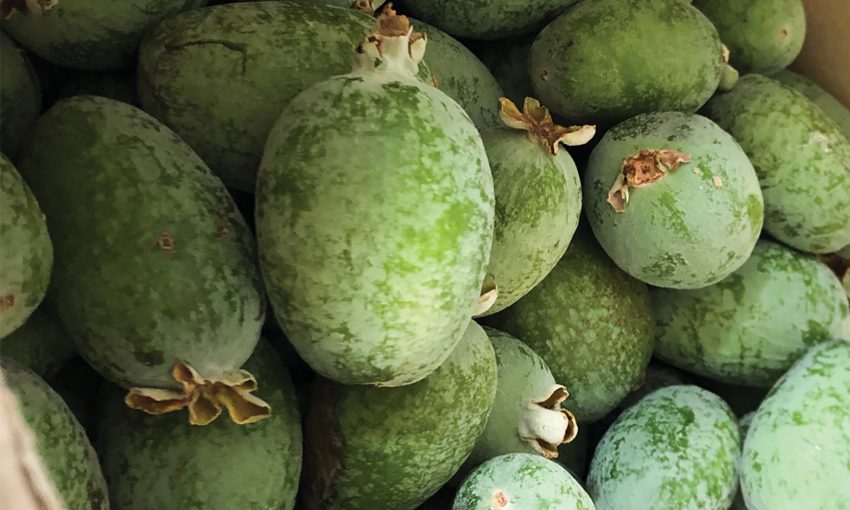
Feijoa sellowiana is often referred to as pineapple guava. With a lovely flavour, ease of picking and gorgeous flowers before setting fruit, this plant also can serve as beautiful evergreen shrub. It takes to being pruned and shaped if needed, has leathery leaves ideal for our harsh summers and is not an overly thirsty plant once established.
A hint of banana flavour, the fruit varies in size at harvest time but this does not affect flavour. Picking season is short but plentiful with fruit lasting about a week after harvest.
If you are after a hardy and different type of fruit, it is a lovely one to own. Try it with ice cream or in salads. Let the kids have fun finding the green fruit in the mass of similar coloured green leaves.
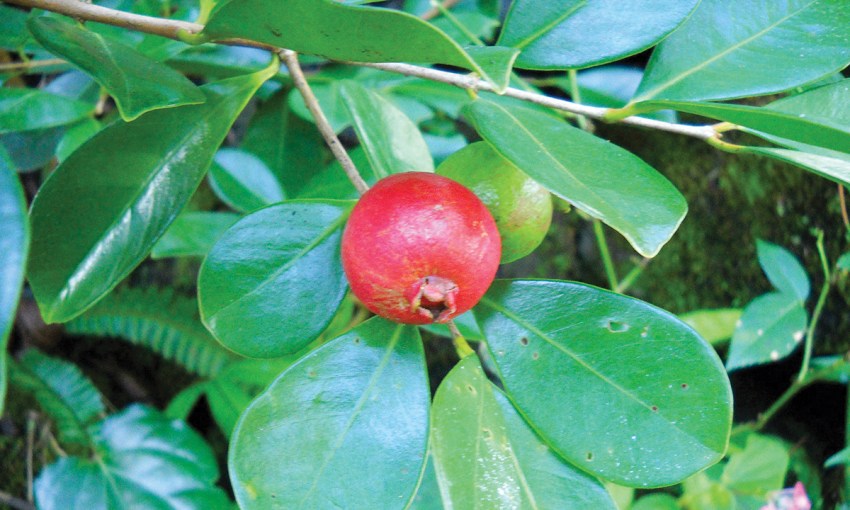
Apple guava Psidium guajava
A number of varieties are becoming more locally available, mostly in the hot months of the year. Hawaiian Pink has a sweet tang and delightful pink flesh. But there are lots to choose from.
Easy to harvest, but best eaten within a week of picking, harvest only when fully ripe or fallen to the ground. This plant is a heat lover, going dormant in cooler months. These quick growing guavas fruit well and have an intense sweet aroma. It will love its water in summer – beware, leaves wilt/burn. But don’t be overly worried about it as it recovers and shoots readily again from stems. Positioning is the key with this plant; full sun and protection preferred but not essential. Being easy to grow and care for, it could even be used to cover or screen a fence and a row could even be turned into a unique hedge.
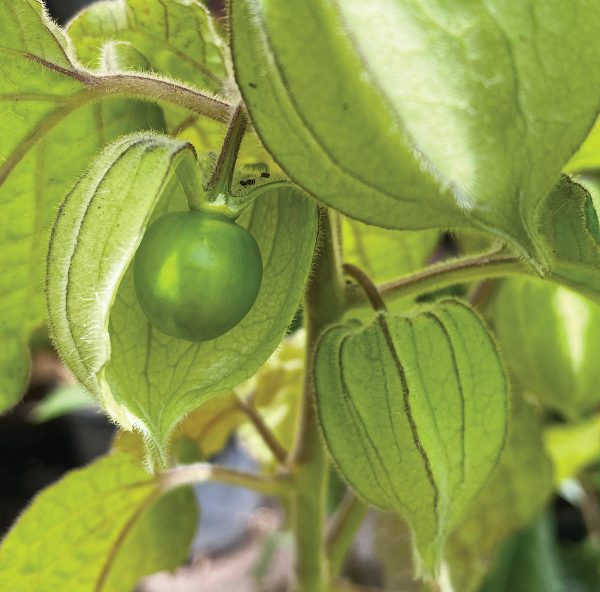
Cape gooseberry Physalis peruviana
My friend calls this one Incaberry – but it can go by a few names, such as golden berry or Chinese lantern. A hint of mango flavour with cherry tomato feel – the more orange the fruit turns, the sweeter it becomes. It can change flavour virtually overnight. Pick regularly. This little, high yielding berry grows very easily and is an easy to harvest shrub height. It will want water in the heat and even though mites may occasionally love it too, it is really quite easy care – feed it, water it, watch it grow at a surprising speed in the warmer months.
Lasting more than just one season, it cuts back just fine. Try it with mixed nuts after dehydrating or fresh in a tossed salad. Or as a snack to just pick at. For kids and grown-ups, the joy comes from getting the berry out of the papery casing after picking or fallen straight from the bush. It’s addictive – a bit like shelling pistachio nuts. They are happy in full sun. A warmth lover and overwinters easily, it fruits much of the year when cared for well. To preserve the life of the fruit, dehydrate correctly and it stores for ages – if you can make them last.
As the final verdict, the best thing about all these incredible edible fruits and berries is that they are snack size – you don’t have to wait for the fruit to grow big. They just need to be ripe. They all yield well and, apart from the strawberry guava, you don’t need to wait forever to get first fruits. Seasonally available in many nurseries around metropolitan Adelaide, it is worth asking for them by specific name (or even better by botanical name) and pre-ordering as the season arrives – they can sell out fast!
This article first appeared in the Summer 2021 issue of SALIFE Gardens & Outdoor Living magazine.


